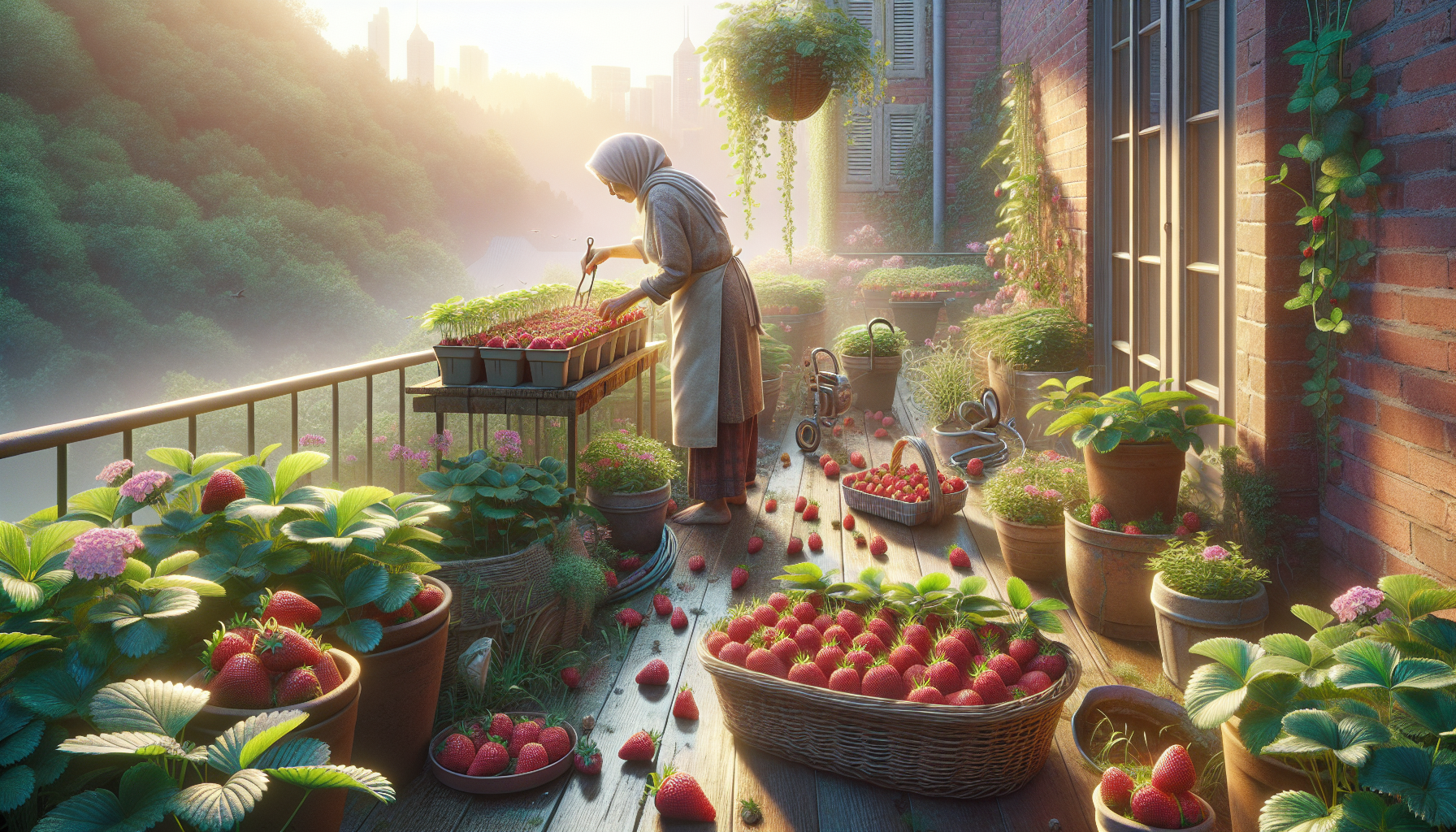Exploring Growing Organic Berries in Pots
Imagine stepping out onto your balcony or into your backyard and plucking fresh, juicy berries straight from your own pots. Not only is this a delightful experience, but it’s also a rewarding way to enjoy organic produce right at home. Growing organic berries in pots is an accessible and fun way to bring a bit of nature into your living space, no matter how small it might be. Let’s dive into how you can start your own berry garden and enjoy the fruits of your labor!
Choosing the Right Berries for Pot Cultivation
Not all berries are created equal when it comes to growing in pots. Some varieties thrive in containers, while others may struggle. Strawberries, for instance, are a popular choice for pot cultivation due to their compact growth and prolific fruiting. Varieties like ‘Albion’ and ‘Seascape’ are particularly well-suited for container growing because they produce fruit throughout the season rather than all at once.
Blueberries can also be grown in pots, but they require acidic soil, which can be a bit more challenging to maintain. Look for dwarf varieties like ‘Top Hat’ or ‘Sunshine Blue’, which are specifically bred for container gardening. Raspberries and blackberries can be grown in pots as well, but they need larger containers to accommodate their more extensive root systems. ‘Heritage’ raspberries and ‘Baby Cakes’ blackberries are good choices for pot cultivation.
Selecting the Perfect Pot
The size and type of pot you choose can significantly impact the success of your berry plants. For strawberries, a pot that is at least 12 inches in diameter and 8 inches deep should suffice. Blueberries, on the other hand, will need a pot that is at least 18 inches in diameter and 18 inches deep to accommodate their root system and soil requirements.
Raspberries and blackberries require even larger pots, ideally around 24 inches in diameter and 18 inches deep. Make sure your pots have good drainage holes to prevent waterlogging, which can lead to root rot. Terracotta pots are a good choice because they allow for better air circulation to the roots, but they can dry out more quickly than plastic pots. Consider your climate and watering habits when choosing the material of your pots.
Soil and Fertilization
Soil is the lifeblood of your berry plants, and choosing the right type is crucial for their health and productivity. For strawberries, a well-draining potting mix enriched with compost will provide the nutrients they need. Blueberries, as mentioned earlier, require acidic soil with a pH between 5 and You can use a specialized blueberry potting mix or amend regular potting soil with sulfur or peat moss to achieve the desired acidity.
Raspberries and blackberries prefer a slightly acidic to neutral soil with a pH between 0 and A good quality potting mix with added compost should meet their needs. When it comes to fertilization, organic options like fish emulsion or compost tea can provide the necessary nutrients without the risk of chemical buildup. Apply these fertilizers every two to four weeks during the growing season to keep your plants healthy and productive.
Watering and Sunlight Requirements
Berries in pots can dry out more quickly than those planted in the ground, so regular watering is essential. Strawberries need about 1 inch of water per week, while blueberries may require up to 2 inches. Raspberries and blackberries also need around 1 inch of water per week. Always check the soil moisture before watering; it should be moist but not waterlogged.
Sunlight is another critical factor for growing berries. Most berry plants require at least 6 hours of direct sunlight per day. If you’re growing your berries on a balcony or in a space with limited sunlight, consider using reflective surfaces or grow lights to supplement the natural light. Position your pots where they can receive the most sunlight possible, and rotate them occasionally to ensure even growth.
Pruning and Maintenance
Pruning is an essential part of maintaining healthy berry plants. For strawberries, remove any runners that appear to keep the plant’s energy focused on fruit production. Blueberries should be pruned in late winter to early spring to remove any dead or diseased wood and to shape the plant for better air circulation.
Raspberries and blackberries require more extensive pruning. After the fruiting season, cut back the old canes to the ground and thin out any new canes to about six per plant. This will encourage new growth and better fruit production in the following season. Regularly check your plants for pests and diseases, and treat them promptly with organic solutions like neem oil or insecticidal soap.
Harvesting Your Berries
One of the joys of growing your own berries is the satisfaction of harvesting them. Strawberries are ready to pick when they are fully red and ripe. Gently twist the fruit from the stem to avoid damaging the plant. Blueberries are ready when they turn a deep blue and come off the bush easily.
Raspberries and blackberries should be harvested when they are fully colored and easily detach from the plant. Enjoy your fresh berries straight from the pot, or use them in a variety of recipes, from smoothies to pies. There’s nothing quite like the taste of homegrown, organic berries!
Common Challenges and Solutions
Growing berries in pots can come with its own set of challenges. One common issue is soil drying out too quickly, especially in hot weather. To combat this, consider using a self-watering pot or adding a layer of mulch to the soil surface to retain moisture.
Pests like aphids and spider mites can also be a problem. Regularly inspect your plants and use organic pest control methods like neem oil or insecticidal soap to keep these pests at bay. If you notice signs of disease, such as mold or mildew, remove affected parts of the plant immediately and treat with an appropriate organic fungicide.
Another challenge is maintaining the right soil pH, especially for blueberries. Regularly test your soil and adjust as needed with sulfur or lime to keep it within the optimal range. With a bit of care and attention, you can overcome these challenges and enjoy a bountiful harvest of organic berries.
By following these guidelines and tips, you can successfully grow organic berries in pots and enjoy the fruits of your labor. Whether you’re a seasoned gardener or a beginner, the joy of harvesting your own fresh, organic berries is an experience that’s well worth the effort. Happy growing!

